Encore becomes perfect encore to Enclave
By John Gilbert
ATLANTA, GA. — To traditional Buick owners, the new Encore might be too small, too light. Traditional Buick cynics might point out the styling glitch of the Encore’s hood having more portholes than there are cylinders. Acknowledging such criticism, the 2013 Encore still might be the ideal vehicle to help Buick continue breaking from its own tradition, in quest of more and younger customers.
The success of the large and luxurious Enclave made us all wonder what Buick could do for an encore, and the response IS the Encore — an all-new compact crossover SUV that is 4 feet shorter and 1,500 pounds lighter than the Enclave, and outperforms it in agility despite having the smallest engine ever offered in any vehicle wearing the Buick name.
Whoever thought we’d see the day when Buick would create a small, compact SUV, powered by a 1.4-liter engine that is turbocharged up to 138 horsepower and 148 foot-pounds of torque, aimed at combining adequate performance plus 30 miles per gallon?
“Basically, the Encore has the attributes of a larger SUV in a smaller, more efficient package,” aid Buick marketing manager Lloyd Biermann. “Our targets are to make this an Enclave for those age 30-50, and come in two primaryu groups — those who are often by themselves in a vehicle and don’t need the room of a bigger SUV, and empty-nesters who don’t need more room for occupants, and who don’t want to be a car-pool person.”
The Encore is truly a global project, with engine ideas springing from Germany’s Opel brand, conceptualized and designed in the U.S., and with actual development and construction done entirely in Gen eral Motors facilities in Korea. James Danahy, who used to be a key engineer on Corvette development, shifted his job to coordinating the development of the Encore, which necessitated him moving to Korea for three years.
The end result is a progressively contemporary and sporty SUV priced from the mid-$20,000 range and aimed at youthful buyers. Read more
Fiesta combines pep, high-mpg from 1.0 liters
By John Gilbert
SANTA MONICA, CALIF. — For decades, U.S. car buyers have been conditioned to buy “bigger is better” cars and engines, which makes it a challenge to change mindsets smaller displacement engines, which will still provide peppy performance but with vastly improved fuel economy.
Ford has taken clear control of the progressive technology with its EcoBoost engines, which are the product of Ford building smaller displacement engines, turbocharging to get stronger, larger-engine performance, while enjoying the fruits of superior gas mileage. But for the coming year, Ford is going off the automotive deep end.
Already on sale in Europe, Ford is preparing to sell the 2013 Fiesta subcompact with a 1.0-liter engine, which has only three cylinders, instead of the four, five, six or eight cylinders we’ve all owned, admired and sought.
The thought of only three cylinders is mind-bending, but only until any customer drives one.
The trick is that Ford has brought its 1.0 engine into the new and expanding EcoBoost array, a group of turbocharged engines which now includes the 3.5-liter V6, and 4-cylinder engines measuring 2.0 and 1.6 liters. But 3 cylinders? And only 1.0 liter?
Surprise! Turbocharging operates by scavenging the escaping exhaust flow and directing it through a channel to spin a turbine wheel, generating a heightened volume of air, and at a much higher velocity of airflow, into the intake manifold. That flow draws in more fuel, and the result is a large dose of fuel to deliver more horsepower and meet the demands of higher performance driving. Naturally, standing on the gas to get more power doesn’t do a lot for fuel economy, but if you drive a turbocharged car with some restraint, you don’t cause the turbo to spin up toward maximum boost, and you can attain the same fuel economy as the same engine without turbocharging.
The beauty is that if and when you do need the power of a bigger engine, stepping on the gas summons instant energy. It’s another of those European tricks, where cost conscious car-owners have been buying the smallest-displacement engines available, and selecting the turbocharged version to sail along at high speed. Frugal European buyers can buy cars with a normally aspirated 1.0, which delivers 70-80 horsepower. Turbocharging the reinforced 1.0 jacks the power up to 123 horsepower and 148 foot-pounds of torque — more than enough to bring the Fiesta to life for even demanding buyers.
In the Fiesta, you climb into the driver’s seat, fire up the engine, shift the 5-speed stick into first gear, and take off. Drive it quickly through the cityscape congestion of Santa Monica, turn down and drive north along the Pacific Coast Highway, then turn inland and charge up through some of the best curvy mountain roads in the country. You will find that you can shift it on up to fifth, and cruise effortlessly, but if you work the gearbox to stay in fourth mostly but downshift to third for the tightest curves, the Fiesta performs like a light and agile sports sedan.
Another of the benefits of turbocharging with direct injection and variable valve-timing is that my preference for a 6-speed stick instead of the 5-speed is pretty well negated by the Fiesta’s performance. If you go into a tight turn properly revved up in third gear, naturally the car pulls out of the curve with strong potency; but if you go into it with fewer revs in fourth, stepping on the gas means the turbocharger spools up and it still provides smooth power as the revs climb. Either way, you have long since forgotten that it is a comparatively tiny 3-cylinder engine doing the work.
In the battle for the auto industry’s two mainstream small-car categories, Ford has a solid head start, because its “C” segment Focus, and smaller “B” segment Fiesta have both been running strong in Europe for decades. While we in the United States got a Focus we can call dumbed down from the much more accomplished European version, we now are getting a chance to buy the singular global version of both cars. Focus buyers from years past will be astounded at the difference in tightness and performance of the new Focus.
The Fiesta is an entirely different animal. We used to get a small 3-door Fiesta that was a solid performer, and when Ford decided to stop selling the car in the U.S., it continued to thrive in Europe. So when tightening economy, rising fuel prices, and just plain common sense finally broke through the U.S. consumers’ traditional concept of cars that were larger than needed, and too large to be economical. Ford brought the Fiesta back into the U.S. two years ago, when it was turning the Fiesta and Focus into global cars, meaning there would be only one world-class model of each, worldwide. It was good timing all around.
In addition, Ford is bringing in a still-smaller, blunt subcompact wagon-van-like vehicle, unfortunately called the “CMax,” which makes it sound like it must be a giant truck. The CMax can be bought with a small engine, or with a hybrid combination gas-electric power, or in all-electric EV form. Having driven the Fiesta 1.0 EcoBoost, my anticipation is that the 1.0 EcoBoost would also be perfect for the CMax.
Steve Russ, the technical chief engineer of Ford’s gasoline-engine systems, said that the 1.0 EcoBoost has been available in Europe in the larger compact Focus for eight months, and only recently has been launched in the Fiesta. It probably won’t reach the U.S. showrooms until near the end of 2013. The engine is the product of Ford’s global approach, developed by Ford’s advanced engineering in Cologne, Germany (the Americanized spelling of the German city “Koln”). The engine, which also spent development time in Ford’s United Kingdom facilities, .
“I’m based in Dearborn,” said Russ. “I’m involved in directing the U.S. end, working with engineers here on the engine, but obviously we’re in close contact with the German engineers. In Europe, this engine won the international engine of the year award. They use a normally aspirated version of this engine, with 70-80 horsepower, and we built the engine with a lot of modifications to handle the fast-revving of the turbocharger. Along with the direct injection, we modified the interior of the engine inside and out. The block is built to withstand higher pressure and the cylinder head is unique, with an integrated exhaust manifold, allowing the turbo to be mounted right up close. We also use specially coated pistons, an offset crankshaft for 3-5 percent less friction, and a sealed timing belt.
“We use twin independent variable valve timing, and it’s packed with technology. We’re using a single-scroll Continental turbocharger, which has a small propellor that spins faster to lessen turbo-lag. It can spin as fast as 248,000 RPMs. We also have a second cooling system that only cools off the top of the cylinders.”
Because a 3-cylinder engine is inherently imbalanced, compared to a 4, 5, or in-line 6, the transverse-mounted 1.0 uses special insulating methods to isolate the engine and negate the need for a balance shaft. Early turbocharged production engines had an issue with cooling down, because shutting the engine off abruptly could shut off the oiling, while the turbo wheel was still spinning, and some coking would be common. “Now the engine gets oiled from thermo cycling, with a separate cooling pump that keeps the oil flowing after shutoff,” said Russ.
Russ, whose father is from Superior, Wis., said he is certain the 1.0 EcoBoost will be “great for the Twin Ports. It’s small, and with the flow only to three cylinder heads, there’ll be less warm-up, and no need to plug it in.”
No fuel estimates are in place yet, but Russ is confident, and he also thinks Ford’s idea of smaller displacement but potent engines will spread. “I absolutely think the 1.0-liter EcoBoost will lead to more companies making more small engines,” Russ said. “We have eight vehicles that top 40 miles per gallon, and we’re confident the Fiesta will too.”
While the 1.0 EcoBoost was the feature attraction of the introductory drive through the Santa Monica mountainous area, and on an autocross layout where the Fiesta proved its potency and sporty handling, there is another new Fiesta you’ll be able to find across the showroom. Maybe, even, before the 1.0 is available. That is the Fiesta ST, which is far more than just another of the various and impressive Fiesta models.
The ST is a product of what used to be SVT, Ford’s Special Vehicle Teams unit that takes standard Ford production products and converts them into high-performance vehicles. SVT is responsible for the Shelby Mustang, the F150 Raptor, and a long string of such products. Tim Smith has been with SVT for 10 years, and said that his group is now coordinated with Team RS, the European Ford high-production group.
“Team RS is a new organization, and we’ve traditionally worked together on some projects,” Smith said. “The ‘ST’ brand has a great heritage in Europe, and we’ve worked on both the Focus and Fiesta, and our versions will be universally known as ST. In the Fiesta ST, we use a 1.6-liter 4-cylinder EcoBoost, with 197 horsepower and 214 foot-pounds of torque.
“It’s a different engine; the 1.6 is a smaller family from the 2.0. The1.6 EcoBoost is available in the Fusion and Escape, but as usual with SVT involvement, we’ve improved every aspect from powertrain, electronics, suspension settings, ABS, and cosmetics. We use the 2.0 EcoBoost in the Focus ST, with 252 horsepower and 270 foot-pounds of torque. In the Fiesta, we’ve gotten 6.7-second 0-60 times and 130-plus miles per hour with the 1.6. We use a 6-speed transmission compared to the 5-speed in other Fiestas.
“And we’ve also gotten 34 miles per gallon. We call it guilt-free performance.”
Stiffer spring rates, a firmer twist-beam, and quicker steering set off the Fiesta ST, said Russ, who stresses the car proves that the SVT tradition remains true — a collection of car-fanatics who also happen to be hot-car-fanatics.
“SVT is a passionate group building cars for passionate buyers,” he said. “The beauty of technology is that we had the old, big-displacement engines that had to be fed, and they still do. With turbo power we can make the smaller engine perform to the high-performance standards of larger engines but still get small-engine miles per gallon. The real-world difference is that for every person, there can be an engine that gets good fuel economy but also is fun to drive. This car [the Fiesta ST] is so fun that when you get in it, you find you’re grinning the whole time. No one is bored driving it, and you can use everything it has to offer.”
Ford’s 1.0-liter Fiesta tops L.A. Auto Show debuts
By John Gilbert
LOS ANGELES, CALIF. — The Los Angeles Auto Show has become the vanguard of the “Big Four” auto extravaganzas in the U.S. By running from late November into early December, it has climbed to the pinnacle of anticipation for the domestic auto show season, which resumes with shows in Detroit in January, Chicago in February, and New York in April.
The 2012 Los Angeles show completed its run on Sunday, December 9 at the Los Angeles Convention Center, and amid an array of new high-mileage, low-emission, futuristic concepts, and useful family vehicles, it was Ford that jumped into the forefront, starting with a press introduction of its newly equipped Ford Fiesta, which will be coming out in several new forms, including one with a unique three-cylinder, 1.0-liter engine. We haven’t yet digested all of the 2013s, and Ford led off with some breakthrough technology for a 2014 model.
Domestic auto-makers, who used to reserve their biggest introductions for the Detroit show, were prominent in L.A. again, led by Ford’s tempting look at the European-issue Fiesta which will follow with U.S. distribution by the end of 2013. The high-tech 1.0-liter not only has only three cylinders, but it is one of Ford’s new “EcoBoost” family of smaller-displacement engines that improve fuel economy while also using turbocharging to deliver the power of a bigger engine. The 1.0-EcoBoost supplies, plenty of pep, even while driving through the mountainside highways above Santa Monica. The Fiesta’s subcompact body also is coming out in ST form, which will have a more potent 1.6-liter EcoBoost engine, prepared by the company’s SVT (Special Vehicle Team) high performance arm, assuring that high mileage also can include a kick.
Some of the highlights on the floors of the LA Convention Center, were unveiled at the two press days that preceded the show’s 10-day run. Hyundai once again upstaged its competitors with a party into the night after the first press preview day, at the Figueroa Hotel, complete with mermaids in the pool, and Jack Black performing some Tenacious D music inside.
Chrysler, which is now owned by Fiat, unveiled the new Dodge Viper V10 sports car, but left the biggest splash to Fiat, which not only brought out three new models of the feisty little 500 — a lengthened 4-door “L” model, a smaller pure-electric model with 80-100-mile range, and a rollback convertible top for the turbocharged Abarth model — but also offered a flurry of new and provocative television ads.
Fiat was the star of the last Super Bowl ad campaigns with its Fiat Abarth commercial, and the same show-stopping model not only was present and available for countless photos at the press introduction, but stars, with the cars, in several new commercials. Watch for one co-starring a scorpion, which is the symbol of the sporty Abarth, and has an apparent quest to attain bikini tops, and another clever one where a young man picks up his girlfriend and her parents in the new L 4-door, for a ride that includes a few tunnel-passing surprises. All of them should be appearing on TV soon, but in the meantime they attracted attention from all the neighboring booths at the L.A. show as they continued on the Fiat big screen.
Some new vehicles from Korean partners Hyundai and Kia were prefaced by apologetic comments from their executives for computing errors that the companies will compensate for, after leading to EPA gas mileage estimates that may have been high by a mile-per-gallon or two. Hyundai displayed the short and long versions of its new Santa Fe, which replaces both the existing Santa Fe and the longer Veracruz, and Kia showed an updated Sorento SUV, and a restyled Forte compact sedan.
An interesting reaction to ideas that might not have been good the first time around came from Toyota and Honda.
Toyota lengthened the RAV-4, popular compact SUV, by over a foot and added a third row seat and a V6 engine at its last major renovation. It has remained popular, but the rival Honda CR-V took over and became the most popular SUV on the market. Now, almost eight years later, Toyota has decided to shorten the RAV-4 a bit, and to do away with the V6 option to stick with 4-cylinders. Welcome back.
Honda came out with an all-new Civic for 2012, but it was sharply criticized for its low-rent interior, which was aimed at keeping the price down but came at a time when several prominent compact competitors had refined their interiors upscale. Honda executives have apologized for the mistake and said they would fix it. Art StCyr took the podium and made it sound as though the change was an indication of Honda’s quick-reacting engineering, but the hyperbole didn’t work. StCyr said the new Civic, which has a new look grille, similar to the Insight Hybrid, and softer, more luxurious features plus back-up cameras and other amenities for only $160 more than the short-lived 2012, was in the design stages even as its predecessor was brought out.
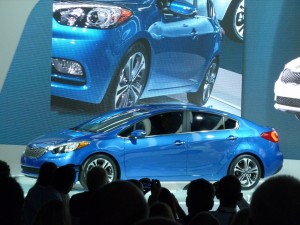
The all-new 2012 Honda Civic is supplanted by a new-look 2013 model with new grille, interior amenities.
“We didn’t have time to get all the features installed,” he said.
“Why not wait another year, then?” he was asked, while it was pointed out that designers always start on the next generation as soon as one is introduced.
“Did the 2012 model have to happen in order to force the new 2013?” StCyr was asked.
“I don’t know what you mean by that,” he said.
“Well, has Honda ever before brought out an all-new model, knowing it was going to replace it in a year?”
“No,” StCyr answered.
I told StCyr later that I wasn’t trying to be chippy, but those were questions that needed answering. He thanked me and said they were valid questions and he was surprised nobody else asked them. His best point was that those who bought 2012 models didn’t buy bad cars; the new one is just improved.
Mazda unveiled its new Mazda6 midsize sedan, with a 2.5-liter Skyactiv 4-cylinder, reiterating that all its new engines will have Skyactiv technology, which is a thorough renovation of the interior of the engine, including the block, with longer stroke, smaller bore, and special intake and exhaust systems, plus new transmissions, in order to extract significantly higher fuel economy. The Mazda3 started with a 2.0 Skyactiv, and the new-for-2013 CX-5 compact SUV houses the full manifold system and will outperform the sporty Mazda3 on a race track, while getting mid-30s mpg. A redesigned CX-9 full-size SUV also now wears the signature blunt nose of the CX-5 and Mazda6. Mazda officials reiterated their intention to bring in a new 2.2-liter turbo-diesel for the new sedan and SUV entries.
Volkswagen offered a new cabrio (convertible) model of its Beetle compact, and showed off the impressive new Jetta Turbo Hybrid, the industry’s first attempt at combining a small (1.4-liter) engine with turbocharging and hybrid technology.
Acura unveiled its RLX, which is the name the brand’s luxury leader will now use, replacing RL. It has all-wheel drive available, and the latest all-wheel steering, called “P-AWS.” Naturally, the language exchange will have fun with the chrome “Paws” sign on the rear. Better than “Pause,” probably. A new three-motor hybrid is coming soon. Acura also displayed a beautiful new concept roadster, and displayed the near-finished version of its new NSX sports car.
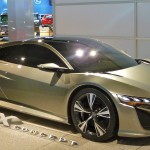
Acura's high-tech NSX is nearly ready for production, while the brand's upscale halo car (right) will be the RLX, replacing the RL.
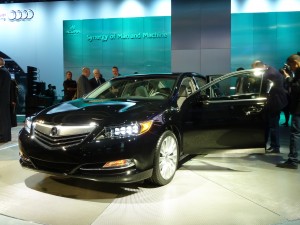 A new Land Rover model, and a pair of spectacular looking new Jaguars shared a stand, as the two British makes now are owned by Tata Motors of India. Porsche brought out a new and longer Cayman sports coupe.
A new Land Rover model, and a pair of spectacular looking new Jaguars shared a stand, as the two British makes now are owned by Tata Motors of India. Porsche brought out a new and longer Cayman sports coupe.
Audi’s U.S. president Scott Keogh spoke about his company’s commitment to turbo-diesels and said its A3 and Q7 TDIs had done so well, the company will also bring in TDI models of the A6, A7, and A8 sedans, and the midsize Q5 SUV. He said the company vowed to prove the TDI engines get 30 percent better fuel economy, lower particulate and evaporative emissions, and lower nitrous oxides, and that in the last year, 33 percent of the Q7 SUVs were sold with TDI engines, and a whopping 55 percent of A3 compacts went out of showrooms with TDI power. “It allowed the U.S. to save $26 million in gasoline costs, and sacrificed nothing,” Keogh said, calling the TDIs with their fantastic torque thrust “cars without compromise.”
BMW also had a flashy new rear-engine concept sports car that was a major attraction. The German company continues to produce vehicles that are the standard of the industry, including the current 3-Series that is a Car of the Year finalist, and the new X1 compact SUV that is a Truck of the Year finalist.
Chevrolet, which has its new subcompact Ronic and smaller Spark on the market, showed its new Impala and Malibu sedans, which look quite similar, although the Impala is larger. But Chevy held off displaying the new Corvette, which reportedly is being held in reserve for Detroit.


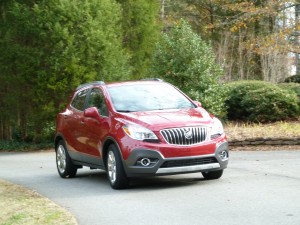
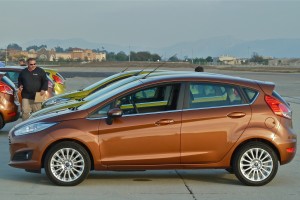
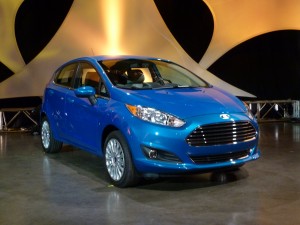
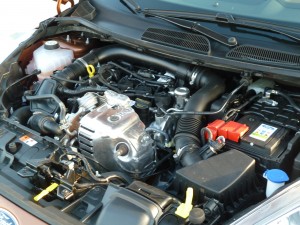
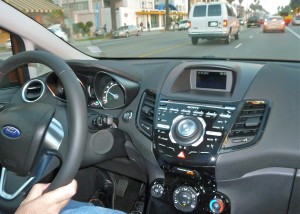
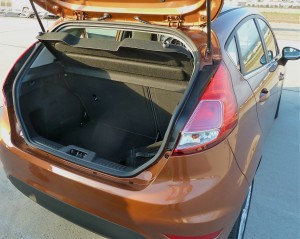
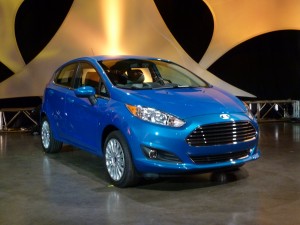
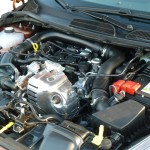
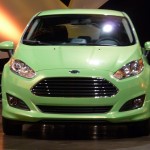
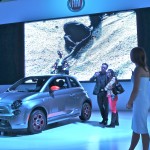
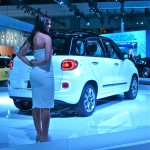
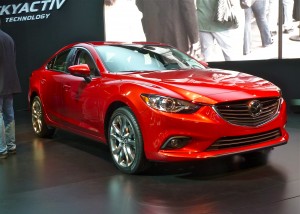
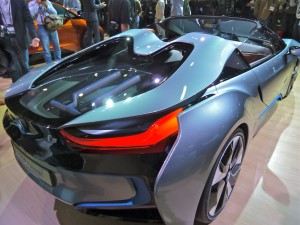
 John Gilbert is a lifetime Minnesotan and career journalist, specializing in cars and sports during and since spending 30 years at the Minneapolis Tribune, now the Star Tribune. More recently, he has continued translating the high-tech world of autos and sharing his passionate insights as a freelance writer/photographer/broadcaster. A member of the prestigious North American Car and Truck of the Year jury since 1993. John can be heard Monday-Friday from 9-11am on 610 KDAL(www.kdal610.com) on the "John Gilbert Show," and writes a column in the Duluth Reader.
John Gilbert is a lifetime Minnesotan and career journalist, specializing in cars and sports during and since spending 30 years at the Minneapolis Tribune, now the Star Tribune. More recently, he has continued translating the high-tech world of autos and sharing his passionate insights as a freelance writer/photographer/broadcaster. A member of the prestigious North American Car and Truck of the Year jury since 1993. John can be heard Monday-Friday from 9-11am on 610 KDAL(www.kdal610.com) on the "John Gilbert Show," and writes a column in the Duluth Reader.